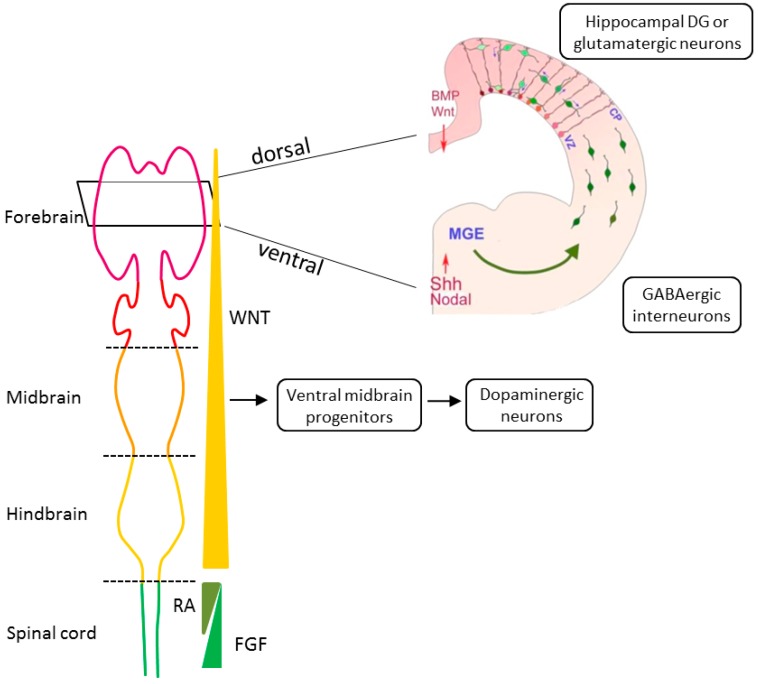Figure 1.
Tracing early neurodevelopment. Key morphogens in anterior–posterior patterning are WNT (wingless), FGF (fibroblast growth factors), and RA (retinoid acid). Gradients of these morphogens regulate differentiation into specific types of neural progenitor cells of forebrain (purple), midbrain (orange), hindbrain (yellow), and anterior spinal cord (green). Key morphogens in dorsal–ventral patterning are gradients of BMP (bone morphogenetic proteins), WNT, SHH (sonic hedgehog), and Nodal. BMP and WNT determine the dorsal fates of neural progenitor cells, whereas SHH and Nodal determines ventral fates. Different types of neural cells for tracing early neurodevelopment in schizophrenia (SCZ) are shown: Ventral midbrain progenitors give rise to tyrosine hydroxylase-positive dopaminergic neurons. Neural progenitor cells (green) from the ventricular zone (VZ) of the dorsal telencephalon generate all excitatory glutamatergic pyramidal neurons. Dorsal progenitors use radial glia cells (red) as scaffold to migrate radially to the cortical plate (CP) and from there to destined cortical layers. Interneurons (green) are derived from the ventral neurogenic zone termed medial ganglion eminence (MGE) and migrate tangentially to the pallium. There, interneurons can use radial glia cells to ascend to the cortical plate as is the case for inhibitory GABA-ergic interneurons or to descend to the ventricular zone. Differential interactions between subsets of interneurons and the radial glial scaffold are indicated by shades of green and red, respectively. On top of this, local guidance cues that are indicated by a gradient of pink can influence interneuron positioning as shown by blue arrows. Part of Figure 1 is reprinted from K. Sue O’Shea and Melvin G. McInnis, Neurodevelopmental origins of bipolar disorder: iPSC models; published by Molecular and Cellular Neuroscience, volume 73, pp. 63–83, 2016, with permission from Elsevier.

